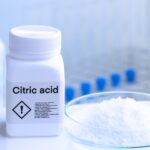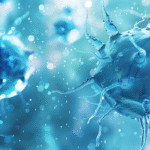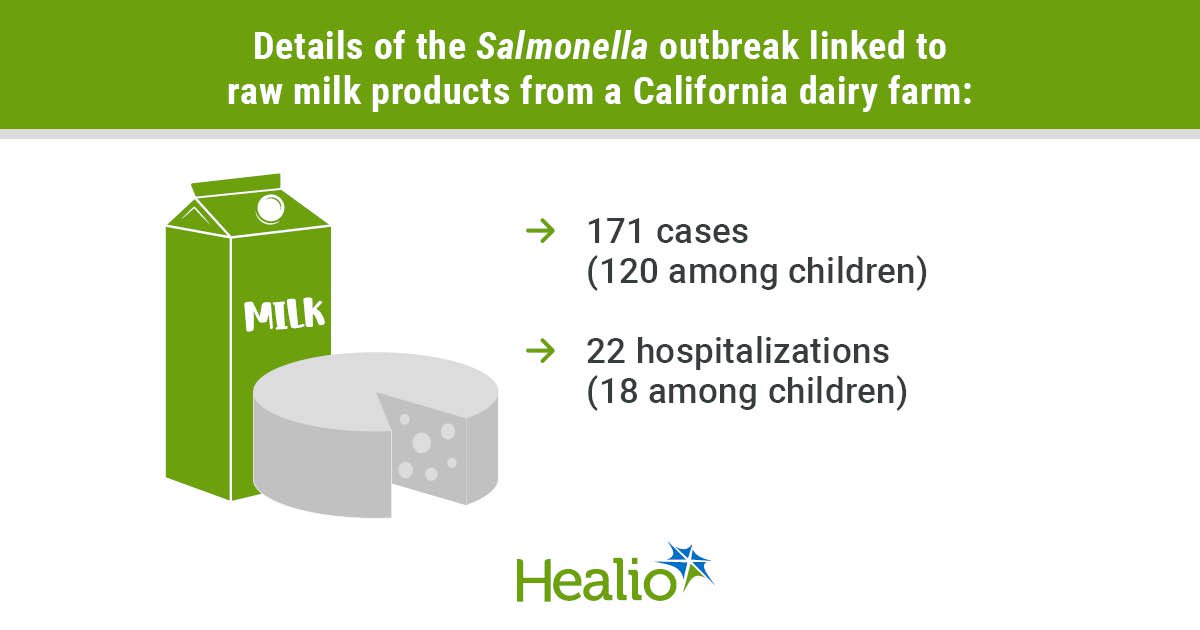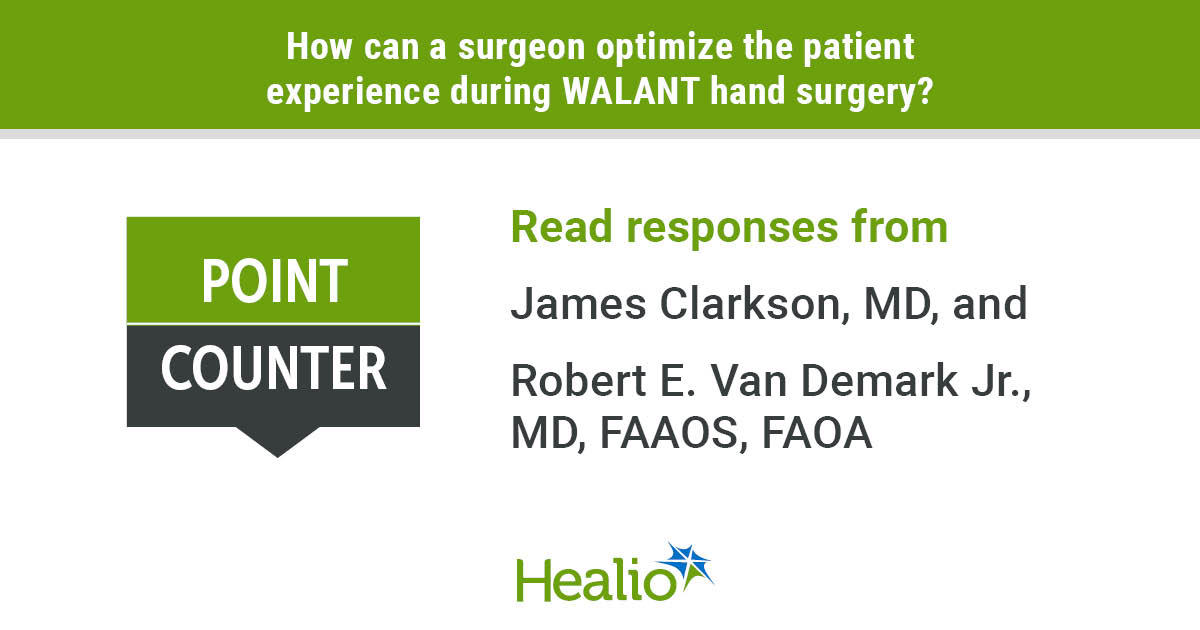August 19, 2025
2 min read
Key takeaways:
- The outbreak was one of the largest foodborne outbreaks linked to raw milk since 2001.
- Of the 171 reported cases of Salmonella, 70% occurred among children.
A large outbreak of Salmonella that was traced back to contaminated raw milk from a California farm left more than 170 people across five states sick, including 120 children, an investigation showed.
It was one of the largest foodborne outbreaks linked to raw milk in more than 2 decades, according to the California Department of Public Health (CDPH).

Data derived from Weinstein E, et al. MMWR Morb Mortal Wkly Rep. 2025;doi:10.15585/mmwr.mm7427a1.
“This investigation was initiated when a local public health department identified multiple people with Salmonella infections who reported having consumed raw milk from the same supplier, indicating a possible outbreak,” the CDPH told Healio.
The outbreak was first identified on Oct. 18, 2023, when CDPH was notified of eight cases of salmonellosis by the County of San Diego Health and Human Services Agency. The cases were all reported among people who had reportedly consumed raw milk from a dairy farm in California. These cases, paired with another report of Salmonella Typhimurium infection in a person who also drank raw milk from the same farm, prompted a statewide investigation.
During the investigation, health departments collected and tested 40 product samples — including raw milk, heavy cream and cheese — from the farm, several stores and patient homes.
Testing detected Salmonella Typhimurium in three samples: two bottles of raw milk from the bottling facility at the farm, and raw milk from one of the stores. According to CDPH, this resulted in a voluntary product recall within 1 week of the start of the investigation.
The outbreak strain was also later detected in a sample of raw cheese that was made from contaminated milk and aged for 60 days.
In total, the investigation identified 171 salmonellosis cases in California, New Mexico, Pennsylvania, Texas and Washington, including 159 confirmed and 12 probable cases.
“This was one of the largest foodborne outbreaks linked to raw (unpasteurized) milk reported in the U.S. since 2001,” CDPH said.
Although cases were reported in people aged 9 months to 87 years, the investigation revealed that cases occurred primarily among children — 67 in children aged younger than 5 years, 40 in children aged 5 to 12 years and 13 in adolescents aged 13 to 17 years.
Although no deaths were reported, a total of 22 people were hospitalized, 18 of whom were younger than age 18 years.
According to the report, among 159 patients confirmed to be infected with the outbreak strain, 55 were confirmed to have consumed raw milk or heavy cream. And although exposure could not be confirmed for the remaining patients, the authors said “intermittent cases might have resulted from indirect spread, such as through person-to-person transmission.” They added, however, that some patients may have just chosen to not disclose their raw dairy consumption or had “poor recall” of their potential exposure.
According to the CDC, in addition to Salmonella, people who drink raw milk are potentially exposing themselves to a variety of other foodborne pathogens, including Brucella, Campylobacter, Cryptosporidium, Escherichia coli and Listeria. Raw milk has even been implicated in bird flu transmission.
The authors emphasized that consumption of raw dairy products — even from a licensed producer — can be dangerous.
“Consumers may think raw dairy products legally sold at retail stores are safe, but these products can contain harmful bacteria that can cause serious illness,” CDPH said, explaining that cheese made from raw milk, even after 60-day aging, may remain contaminated with bacteria such as Salmonella. “The best way to prevent illness from raw milk is to choose pasteurized dairy products.”
References:
For more information:
CDPH can be reached at media@cdph.ca.gov.









